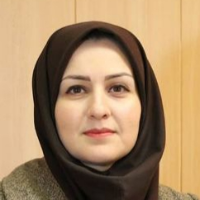Empty space; The place of manifestation and perception of meaning in Islamic architecture (Investigating the effect of empty spaces on the audience, based on Mulla Sadra's views)
Article Type:
Research/Original Article (دارای رتبه معتبر)
Abstract:
Empty spaces have an active and powerful identity architecture. The empty spaces provide the manifestation of meaning by emptying themselves of matter; and perception the meaning affects the audience. MullaSadra considers matter to be associated with nothingness, which includes sensory perception. He considers the senses incapable of revealing external reality. In fact, value to empty spaces is value to immaterial. In this context, Sadra's thoughts on perception can be adapted to architectural issues. This research is of qualitative and interdisciplinary type that has been done by comparative-analytical method and by using documentary studies.
Results
empty spaces are the place of manifestation of meanings, which can affect its audience. By adapting Sadra's perceptual views with the meanings in the empty space, we find that space, due to the emptiness of matter, allows the expression of meanings and perception, which affects the audience unconsciously(implicitly) and consciously(explicitly). According to Sadra, walking in empty spaces is like a kind of movement from the outside to the inside, in which the audience realizes a kind of implicit perception that leads him to meaning(perfection).aims
1. Explain the semantic position of architectural empty spaces and how it affect the audience.2. The connection and adaptation of Mulla Sadra's philosophical views on perception with the perception of meaning in architectural empty spaces.questions:1. What are the semantic effects of the empty spaces on the audience?2. How can Mulla Sadra's philosophical view of perception be adapted to the perception of meaning in a empty space?Keywords:
Language:
Persian
Published:
Islamic Art Studies, Volume:21 Issue: 53, 2024
Pages:
63 to 80
https://www.magiran.com/p2772751
سامانه نویسندگان
اطلاعات نویسنده(گان) توسط ایشان ثبت و تکمیل شدهاست. برای مشاهده مشخصات و فهرست همه مطالب، صفحه رزومه را ببینید.
مقالات دیگری از این نویسنده (گان)
-
Conceptual Modeling Of Evidence-Based Quality Improvement In Public Hospitals (EBD) With A Patient Satisfaction Approach (Case Study: Gandhi Hospital, Tehran)
Aida Sadeghi, *, Khosrow Daneshjoo, Seyed Behshid Hosseini
Journal of Studies of Behavior and Environment in Architecture, Spring 2025 -
From Central Courtyard to Spatial Framing: Transformations of Mass and Void in Tehran’s Residential Architecture
Vahid Fadaee Mehrabani, *
ArchitecturalTechnologies Journal, -
A Comparative Study of Conventional Architectural Design Methods and Adolescent Personality Types based on MBTI Components
Zeinab Moghaddas, Azadeh Shahcheragi *, Hossein Zabihi
Karafan, Winter 2025 -
Investigating the Influence of Illuminationist Philosophy (Hikmat al-Ishraq) on the Manifestation of Aesthetic Elements in Safavid Mosque Architecture Using Panofsky's Method
Leyla Etminan, Seyed Behshid Hosseini *, Siyamak Panahi
Islamic Art Studies, -
بازشناسی جایگاه حکمت و هنرمتعالی در هنر و فرهنگ اسلامی
شیدا شریفی، علی عسگری، مهدی بنی اسدی باغمیرانی
نشریه مطالعات نوین برنامه ریزی شهری در جهان، زمستان 1401





